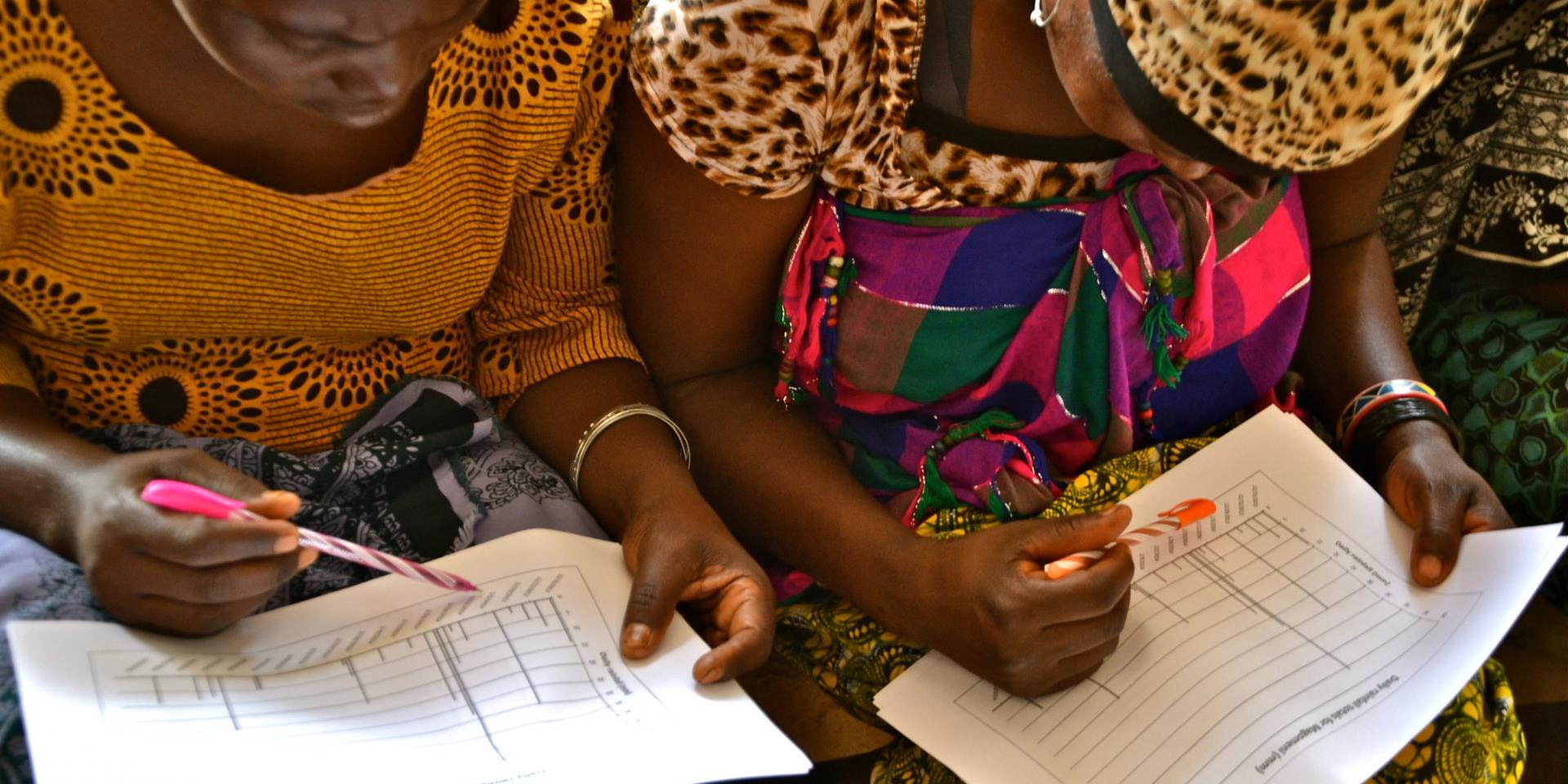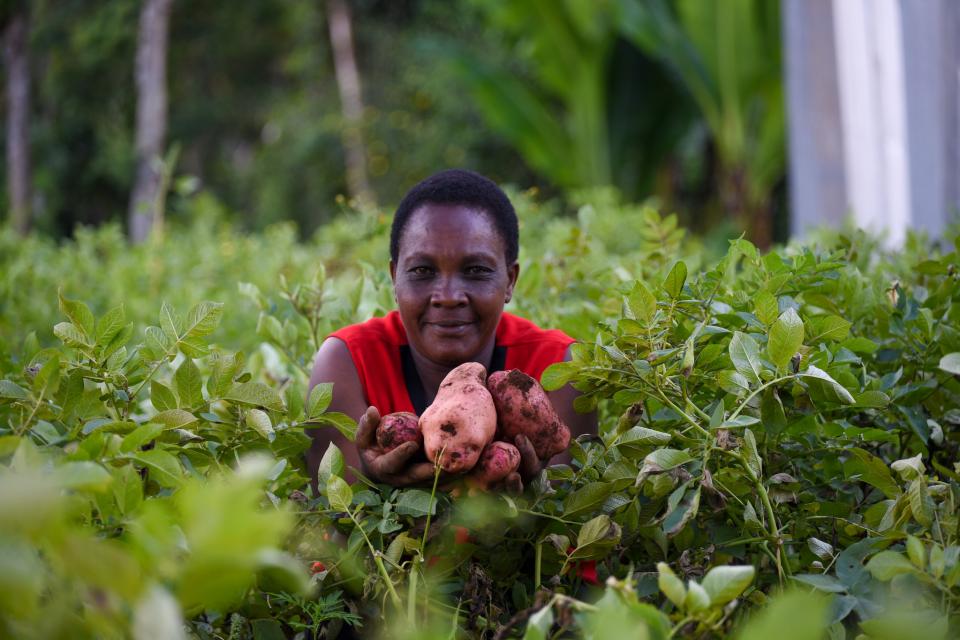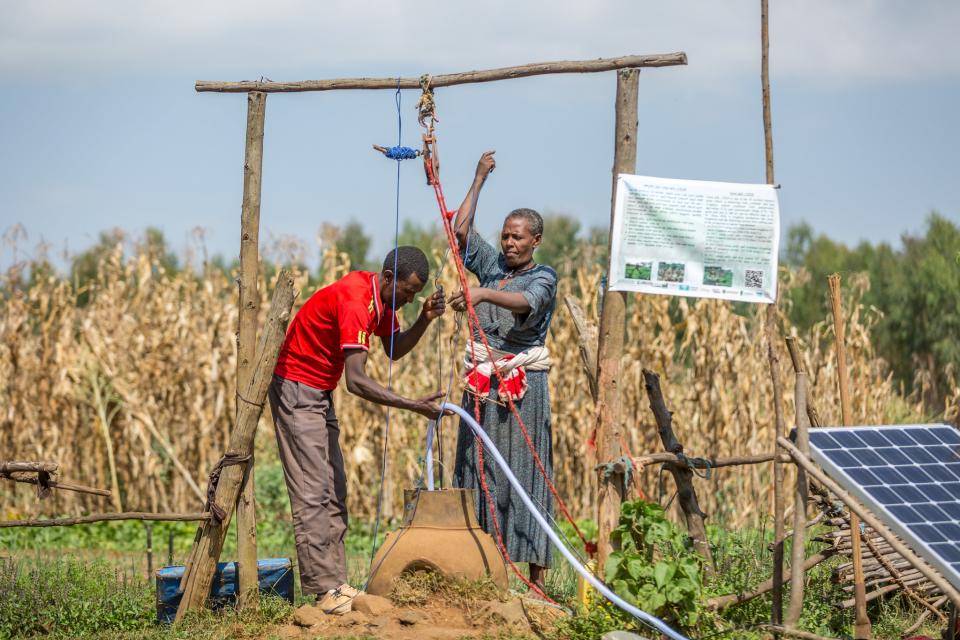Call to action: Addressing gender inequality in agrifood systems for effective responses to climate change
 Photo: Cecilia Schubert/CCAFS.
Photo: Cecilia Schubert/CCAFS.
When industry leaders, producers, civil society groups, and researchers gathered in Washington May 8-10 for the Agriculture Innovation Mission (AIM) for Climate Summit, advancing gender equality in agrifood systems was a crucial element in discussions on ways to catalyze innovation in climate action and agriculture.
“We cannot solve the multiple challenges we face today, including hunger and climate change, without engaging women in the development and dissemination of innovations in agrifood systems,” said Claudia Sadoff, CGIAR Executive Managing Director, during the May 9 high-level plenary session, “Innovation for Inclusive Impact: Putting Women at the Heart of our Food Systems Investments,” hosted by IFPRI’s Gender, Climate Change, and Nutrition Integration Initiative (GCAN) and sponsored by USAID and Agrifood Canada.
Applauding AIM for Climate for spotlighting the need for greater gender equality in effective climate action, Sadoff announced that CGIAR is preparing to launch an Innovation Sprint on Gender and Climate Action ahead of the 2023 UN Climate Change Conference (COP28) in Dubai, United Arab Emirates, November 30-December 12, and invited partners to join this effort. The sprint will promote evidence-based approaches to address gender inequality and advance women’s empowerment through climate action.
“We need intentionally-designed and administered programming to address both the climate crisis and gender inequality,” Sadoff stressed.
The focus on gender equality in agrifood systems comes at a critical time, as global efforts to tackle entrenched gender inequalities have yielded little progress over the past decade. Recent crises including the COVID-19 pandemic, the global food crisis, and intensifying climate change have exacerbated gender gaps in food insecurity, employment, and other welfare measures as highlighted in the 2023 FAO report, the Status of Women in Agrifood Systems.
The report was supported by a CGIAR background paper on gender and climate change. It shows that persistent and sometimes growing gender inequalities in women’s access to resources, services, and livelihood opportunities, underpinned by harmful social norms, hamper women’s ability to respond effectively to climate change. By excluding women as agents of climate action, these inequalities limit the impacts of climate investments.
AIM for Climate partners have a tremendous opportunity to address gender inequalities and support women’s empowerment. Increasing investments in gender-responsive programs and positioning women and other marginalized groups as key beneficiaries fall within all three of AIM for Climate’s objectives: Increased investments in agricultural innovation for climate-smart agriculture and food systems; improved coordination and collaboration for amplified investments; and increased cooperation and co-creation.
CGIAR’s Innovation Sprint on Gender and Climate Action will leverage the ongoing work of the One CGIAR Portfolio of Initiatives, including the HER+ initiative, the GENDER Impact Platform, the Climate Impact Platform, and other CGIAR programs including GCAN, supported by USAID. We invite other partners to join us in launching this sprint ahead of COP28.
As we move forward with the Innovation Sprint, below are some proposed actions that can support meaningful and lasting change for more gender-equitable climate solutions.
- Integrate gender in R&D innovation processes and document progress. Women typically have different preferences and needs for climate innovations than men, including specific preferences for crop traits and labor-saving technologies. Climate investments are more likely to fail when technologies and supporting services are not designed with women’s needs in mind, resulting in missed opportunities to contribute to better climate outcomes. We often know what is needed to support gender integration in agricultural research for development and best practices should be adopted, such as the G+ tool for breeding.
- Design and disseminate extension and climate information services that focus on the different needs and preferences of women and men farmers. Limited access to and awareness of climate-smart practices is one of the key barriers to women’s effective participation in climate-smart agriculture and food systems. When they are aware of the benefits of these practices, women are just as likely, and sometimes more likely, to adopt climate-smart innovations. When extension and advisory services are designed with women’s needs and preferences in mind and targeted to both women and men, agricultural performance improves. The private sector, NGOs, and knowledge partners also have roles to play in this process. For example, the Innovation Sprint focused on Climate Resilience for African Farmers Through Next Generation Weather Intelligence aims to ensure weather data is widely accessible and responsive to the needs of women famers.
- Actively support closing the gender digital divide. There has been significant progress on this challenge over the last 5 years; AIM for Climate partners should focus on regions where gaps remain largest. The gender gap in mobile internet use is 37% in sub-Saharan Africa and 41% in South Asia. This constrains women’s access to climate information, extension messages on climate-smart agriculture, market information, and emergency response information—all increasingly delivered through digital platforms. Increasing women’s access to mobile phones and internet, and helping them learn how to use these tools has demonstrated potential to increase women’s awareness and knowledge of climate-smart technologies, and livelihood opportunities. The CGIAR Digital Innovation Initiative is contributing to this goal by focusing on increasing digital literacy of women in agrifood systems.
- Tailor financial services to women for greater uptake of climate-smart innovations. Efforts to reduce gender disparities in financial services are working. In particular, the expansion of mobile banking services in regions like East Africa and parts of South Asia provides women with an opportunity to save, access credit, and build financial resources to effectively adapt to climate change. Further expanding women’s access may require waiving or reducing registration fees, or accepting nontraditional forms of collateral, while simultaneously increasing women’s financial literacy. Both the public and private sectors should work together to provide financial products tailored to women’s needs, such as affordable microcredit, more asset-based financing, and insurance bundles. The CGIAR Initiative on Climate Resilience uses the risk-contingent credit innovation to increase women’s access to climate funding.
- Governments should direct at least 5% of climate investment funding to women’s grassroots organizations. These groups provide an important source of resilience for women in communities vulnerable to climate change. They direct resources where they are most needed, provide a platform for women’s collective action and local leadership, facilitate access to services such as information, credit, and childcare, and support women’s economic empowerment. Their critical role has been reaffirmed during the most recent global climate and food crises. CGIAR is working with grassroots women’s organization to provide evidence-based climate solutions. Examples include the Self-Employed Women’s Association (SEWA) in India and GROOTS Kenya with support from the German government: Reaching Women with Climate Resilience Strategies.
- Make meaningful—minimum 10%—progress toward 50/50 gender equality goals in food systems. Women leaders and women’s organizations need equal and meaningful participation in decision-making in government agencies, NGOs, knowledge partners, and the private sector to develop more inclusive processes, design gender-responsive interventions, coordinate implementation across sectors, and monitor and evaluate the gendered impacts of crisis responses. If women’s voices are formally represented in crisis planning and response, programs will be more equitable and effective. In addition to progress on 50/50 gender equality in food systems, this requires leadership training and capacity building to support women’s engagement, such as through AWARD.
- Dedicate at least 1% of funding for monitoring the gender-responsiveness of climate actions and their progress in achieving gender equality goals. It is not enough to integrate gender into the design of policies and programs. To ensure plans are implemented and lead to better welfare outcomes for women and girls, governments must commit to gender-related outcome targets and invest in collecting data from both men and women. Data can also be used to assess areas where women are particularly vulnerable to the negative impacts of climate change so that resources may be targeted more effectively to climate-agriculture-gender inequality hotspots. Generating data on the impacts of climate change and climate actions on both women and men, can help to avoid gender-blind investments and adverse impacts, such as increased gender-based violence.
The time for gender-transformative action in climate innovation for agrifood systems is now. With the Innovation Sprint on Gender and Climate Action, we have an opportunity to accelerate this process and make it a focus for action at COP28. We invite potential collaborators to join us in this effort. Please contact us via IFPRI’s Gender, Climate Change, and Nutrition Integration Initiative (GCAN): ifpri-gcan@cgiar.org.


